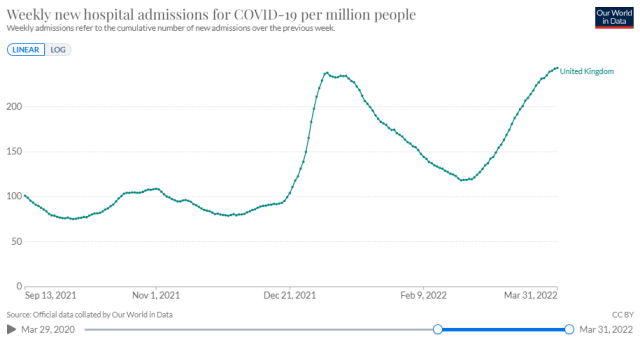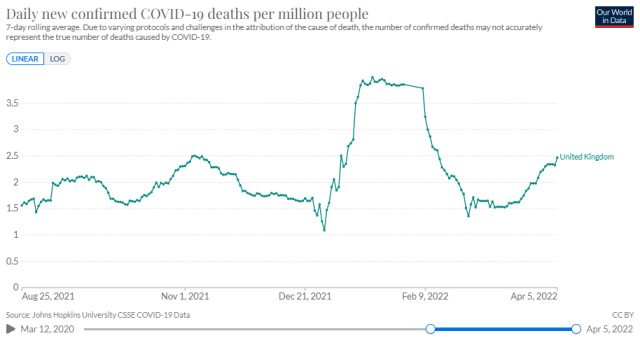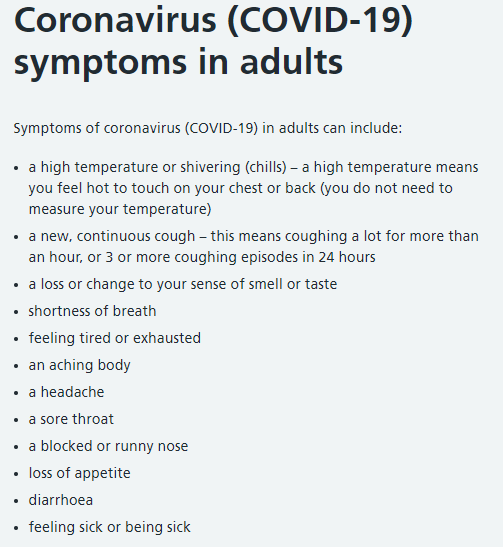Bad news from UK: “Coexistence with COVID-19” seems to have failed
- Normal Liver Cells Found to Promote Cancer Metastasis to the Liver
- Nearly 80% Complete Remission: Breakthrough in ADC Anti-Tumor Treatment
- Vaccination Against Common Diseases May Prevent Dementia!
- New Alzheimer’s Disease (AD) Diagnosis and Staging Criteria
- Breakthrough in Alzheimer’s Disease: New Nasal Spray Halts Cognitive Decline by Targeting Toxic Protein
- Can the Tap Water at the Paris Olympics be Drunk Directly?
Bad news from UK: “Coexistence with COVID-19” seems to have failed
- Should China be held legally responsible for the US’s $18 trillion COVID losses?
- CT Radiation Exposure Linked to Blood Cancer in Children and Adolescents
- FDA has mandated a top-level black box warning for all marketed CAR-T therapies
- Can people with high blood pressure eat peanuts?
- What is the difference between dopamine and dobutamine?
- How long can the patient live after heart stent surgery?
Bad news from UK: “Coexistence with COVID-19” seems to have failed.
UK co-exists with COVID-19 for a month, death toll soars 36%, hospitalizations return to peak.
On February 24, British Prime Minister Boris Johnson announced that he would lift all existing coronavirus restrictions in England and take the lead in “coexisting with the COVID-19”.
Living with COVID-19 long-term plan includes: People with COVID-19 are no longer legally required to self-isolate, but are advised to stay home and avoid contact with others for at least 5 days; no more contact tracing; workers do not need to tell employers if they need to self-isolate ; Most public places no longer need to wear masks, etc.
Three weeks ago, Mays reported, “The UK’s COVID-19 mortality rate fell to 0.03%, lower than the flu, and it was the first to achieve “coexistence with the COVID-19” .
Due to the repeated infection of the COVID-19 virus, the large-scale vaccination of the vaccine, and the characteristics of Omicron, the case fatality rate of the COVID-19 in the UK fell to 0.03% in early March, even lower than that of the flu. In the first stage of “coexistence”, the United Kingdom seems to have handed over a relatively satisfactory answer.

From April 1st, England will no longer provide free rapid antigen test kits to ordinary people. Instead, go to a merchant that has been approved for supply testing to buy it yourself.
Taking the British chain store Boots as an example, the price of two antigen test kits is 3.95 pounds.

COVID-19 antigen self-test kit provided by Boots in the UK
As the first Western country to lift all epidemic prevention restrictions, what is the current situation in the UK one month after “coexisting with the COVID-19”?
A month of coexistence with the COVID-19:Are UK data still optimistic?
According to BMJ’s news on April 4, the data is not as optimistic as previously reported.
After the implementation of the policy of “coexisting with the COVID-19”, the United Kingdom ushered in another small peak of the epidemic. In the week of March 20-26, a total of 4.9 million people were infected in the UK, or 1 in 13 people, according to the Office for National Statistics.
In addition, in the past month, the number of COVID-19 patients admitted to hospitals in England has more than doubled compared to the previous record, and the number is still rising.
 Weekly hospitalisations due to COVID-19/unit: million
Weekly hospitalisations due to COVID-19/unit: million
Data provided by the NHS shows that in the seven days from March 21-27, the average daily number of hospitalizations caused by the COVID-19 was 2,008, up from 1,749 in the previous week (March 14-20) ; more than a month ago (21-27 February) 2.12 times.
Higher hospitalizations were also associated with changes in the prevalent strains. At this stage, the main circulating strain in the United Kingdom is the Omicron BA.2 subtype. At present, the level of hospitalizations caused by this strain has approached the first wave of the outbreak caused by Omicron BA.1 in early January this year, that is, the number of hospitalizations per week is about 14,000.
Not only the number of hospitalizations, but the number of deaths caused by the COVID-19 has also rebounded. Also in the seven days to March 27, hospitals reported a total of 988 COVID-19 deaths , an increase of 36% from the 725 deaths two weeks ago (March 7-13) .
 UK daily COVID-19 deaths / unit: million
UK daily COVID-19 deaths / unit: million
Given rising infection and hospitalisation rates, David Wrigley, vice-chairman of the British Medical Association (BMA) committee, stressed that the UK government should reconsider “stopping free antigen testing for most people from April 1. “decision.
Wrigley said that the epidemic of COVID-19s in the UK is still at a high stage, and the number of COVID-19 infections is alarmingly high, and the number of hospitalizations and deaths are also rising.
“Antigen test is a simple and effective tool to help people detect whether they are infected. Once antigen test is no longer free, it will be difficult for people to find out that they are infected with the COVID-19, and they do not know when they need to self-isolate. “In this situation, it is very difficult to protect family members as well as the community.”
After “coexisting with the COVID-19”, British medical care is facing enormous pressure. In addition to the rise in hospitalisations, there has also been a rise in the number of NHS staff absent from work due to COVID-19. In the three weeks since February 28, the number of employees absent from work due to COVID-19 has increased by 86%. The rise in the number of infected people hospitalized and the decline in the number of health care workers, the two opposite directions of growth, have dealt a major blow to health care.

At the same time, the emergence of the COVID-19 recombinant strain is a new test for the UK. According to a report released by the UK Health Security Agency on April 1, 637 cases of XE strain infection have been reported in the UK so far, with the earliest sample date of January 19 this year.
Yesterday, Mays reported that there is data that the infection time of XE is significantly shorter, and its transmission speed may be 10% higher than that of the mainstream Omicron, which means that it may be more infectious than BA.2! (For details, see: Medrxiv: The Strongest COVID-19 Omicron Variant Strain XE, how are BA.1 and BA.2 recombined, and what mutations are there?) However, the current research on the XE variant is limited, and the Health Security Administration will also Continue to closely monitor the situation.
Stephen Griffin, an expert in virology at the University of Leeds School of Medicine, believes that the British government’s introduction of the “Coexistence with the COVID-19” plan and the cancellation of prevention and control measures is tantamount to ignoring the continuous and rapid spread of the new coronavirus. As a result, Griffin urged the government “should rebuild public health measures and not put the public at their own risk”.
Officially added 9 new symptoms of COVID-19, Or help find infected people?
As mentioned above, Wrigley believes that after the cancellation of free antigen testing, it seems that it has become a big problem to find people infected with the COVID-19. Therefore, in order to allow people to find out that they are infected with the COVID-19 earlier, the British official updated the list of COVID-19 symptoms.
The nine new coronavirus symptoms on the NHS website include: shortness of breath, fatigue, body aches, headache, sore throat, stuffy or runny nose, loss of appetite, diarrhoea and feeling unwell or being sick. The previous version had only 3 symptoms, which were fever, persistent cough, and loss/alteration of taste or smell.
As stated on the NHS website, the latest version of the symptoms of COVID-19 is getting closer and closer to some other diseases, such as colds and flu.
 Source: NHS official website
Source: NHS official website
Tim Spector, chief scientist of Zeo’s COVID-19 symptom tracking app, said in an interview with BMJ, “We are very happy to see that the NHS has finally updated the official COVID-19 symptoms list. Adding more symptoms is the official step in the right. Helps reduce infections.”
“However, we would like the NHS to adjust the order of symptoms, the current version overemphasizes fever and hyposmia.” Spector stressed, “However, after the Omicron variant, these symptoms are not as common as before. According to Zeo COVID-19 A survey by the symptom tracking app found that the five most common symptoms of COVID-19 positive patients were runny nose (83%) , fatigue (71%) , sore throat (69%) , headache (69%) and sneezing ( 68%) . ”
That is to say, the most common symptoms of the popular Omicron at this stage are a runny nose, followed by fatigue, sore throat, headache and sneezing, rather than fever and loss or change of smell/taste. The symptoms are also closer to the flu.
references
[1]https://www.bmj.com/content/377/bmj.o882
[2]https://www.bmj.com/content/377/bmj.o892
[3]NHS. Main symptoms of coronavirus (COVID-19). www.nhs.uk/conditions/coronavirus-COVID-19/symptoms/main-symptoms.
[4]https://ourworldindata.org/covid-deaths
Bad news from UK: “Coexistence with COVID-19” seems to have failed.
(source:internet, reference only)
Disclaimer of medicaltrend.org
Important Note: The information provided is for informational purposes only and should not be considered as medical advice.



